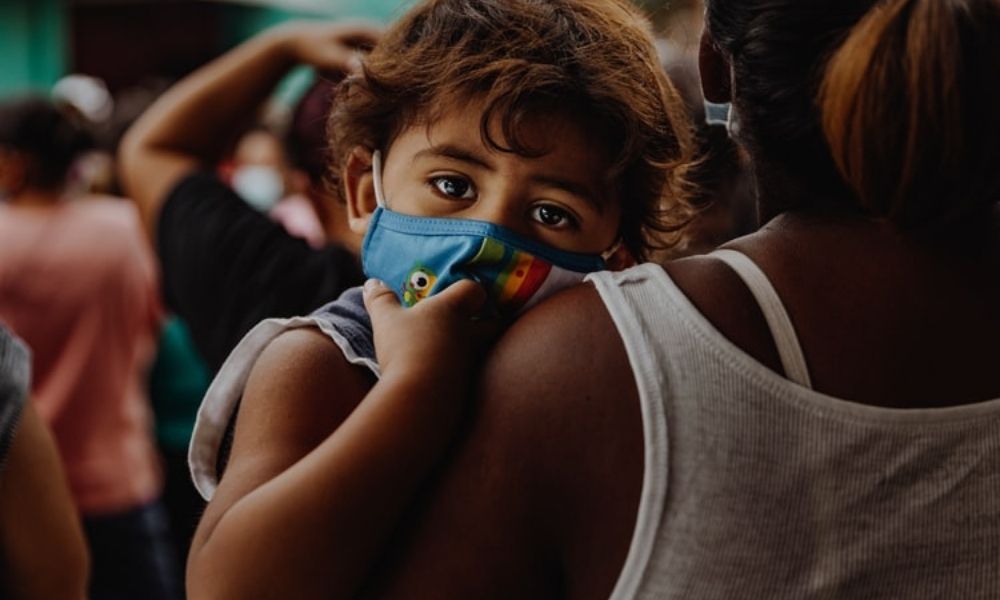
Image Credits: Unsplash
COVID May Become A Largely Childhood Disease In Next Few Years: Study
Writer: Tashafi Nazir
For most people, journalism sounds hectic and chaotic. For her, it's a passion she has been chasing for years. With an extensive media background, Tashafi believes in putting efforts on presenting a simple incident in the most interesting way.
Others/World, 13 Aug 2021 12:57 PM GMT
Editor : Madhusree Goswami |
A mountain girl trying to make it big in the city. She loves to travel and explore and hence keen on doing on-ground stories. Giving the crux of the matter through her editing skills is her way to pay back the journalism its due credit.
Creatives : Tashafi Nazir
For most people, journalism sounds hectic and chaotic. For her, it's a passion she has been chasing for years. With an extensive media background, Tashafi believes in putting efforts on presenting a simple incident in the most interesting way.
COVID-19 may behave similar to other common-cold viruses, which will affect predominantly young children who have not yet been immunised or exposed to the virus, according to a new study published in the journal Science Advances.
Over the next few years, COVID-19 may behave similar to other common-cold viruses, which will affect predominantly young children who have not yet been immunised or exposed to the virus, according to a new study published in the journal Science Advances.
The US-Norwegian team noted that because COVID-19 intensity is usually lower among children, the overall burden from this disease is expected to lessen as the SARS-CoV-2 virus becomes endemic in the global population.
"Following infection by SARS-CoV-2, there has been a clear sign of growing severe outcomes and fatality with age," said Ottar Bjornstad from the University of Oslo in Norway, reported India Today.
Risk Likely To Shift To Children
"Yet, our modelling results suggest that the risk of infection will likely shift to younger children as the adult generation becomes immune either through vaccination or exposure to the virus," he said.
Such shifts have been noted in other coronaviruses and influenza viruses as they have risen and then become endemic, the study stated. It noted that such shifts have been observed in other coronaviruses and influenza viruses as they have risen and then become endemic.
Bjornstad stated that the age-incidence patterns during virgin outbreaks could vary from endemic circulation, as per the historical records of respiratory diseases.
"For instance, ongoing genomic work indicates that the 1889-1890 pandemic, also known as the Asiatic or Russian flu killing one million people, primarily adults over age 70 -- may have been caused by the emergence of HCoV-OC43 virus, which is now an endemic, mild, repeat-infecting cold virus affecting mostly children ages 7-12 months old" Bjornstad said.
He, however, warned that if an immunity to reinfection by SARS-CoV-2 disappears among adults, the group could be vulnerable to the disease, although previous exposure to the virus would lessen the gravity of the infection.
"Empirical evidence from seasonal coronaviruses indicates that prior exposure may only confer short-term immunity to reinfection, allowing recurrent outbreaks, this prior exposure may prime the immune system to provide some protection against severe disease," said Mr Bjornstad.
Vaccinated People Show Good Response
"However, research on Covid-19 indicates that vaccinated people show a great response as compared to those exposed to the virus, so everyone is encouraged to get immunised as soon as possible," he added.
A "realistic age-structured (RAS) mathematical model" was created by the team integrating demography, degree of social mixing, and duration of infection-blocking and disease-reducing immunity. This was created to look into possible future scenarios for age incidence and burden of mortality for COVID-19.
Disease Burden
The researchers looked at disease burden over immediate, medium and long terms - 1, 10 and 20 years, respectively as well as for 11 countries with different demographies namely China, South Korea, Japan, UK, Spain, France, Germany, the US, Italy, Brazil and South Africa. The data was used from the United Nations for every country to parameterise the model.
It assumes that, on any given day, the reproduction number (R) - or the level of transmissibility is proportional to the amount of mobility on that particular day.
The model also incorporates various situations for immunity, which includes both independence and dependence of disease extremity on prior exposure, as well as short and long-term immunity.
"For various respiratory diseases that are infectious, prevalence in the population increases during a virgin epidemic but then declines in a diminishing wave pattern as the spread of the infection unfolds over certain period toward an endemic equilibrium," Ruiyun Li, a postdoctoral fellow at the University of Oslo said, as quoted by India Today.
"Depending on immunity and demography, this observed trajectory is supported by the RAS model. It predicts a strikingly different age structure at the beginning of the COVID-19 epidemic compared to the eventual endemic scenario," he explained.
In the long-lasting immunity scenario that is either permanent or last for at least 10 years, the researchers noted that the young generation is predicted to have the highest percentage of infection as adult people are shielded from fresh infections by prior virus. However, the prediction is likely to hold only if reinfections cause mild disease, Jessica Metcalf, an associate professor at Princeton University, US, stated. She added that the mortality burden over time might not change if initial infections do not prevent reinfections or weaken acute disease among the older generation.
According to the American Academy of Pediatrics, about 4.3 million children have tested positive for COVID-19 since the outbreak of the pandemic, as of August 5. There has been a substantial increase in the number of positive cases as nearly 94,000 cases have been added during the past week. As per the report, the child cases have steadily increased in July after declining in early summer.
Also Read: Govt Launches 'Fit India Freedom Run 2.0' In 744 Districts To Encourage Physical Activities
 All section
All section














